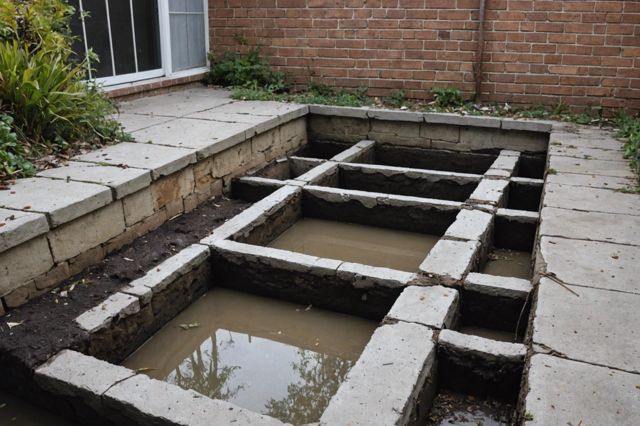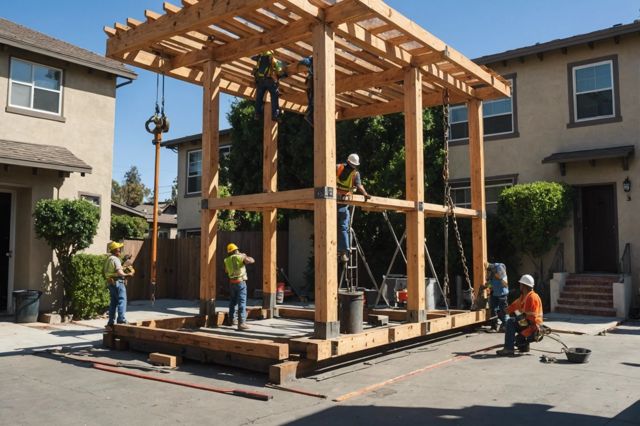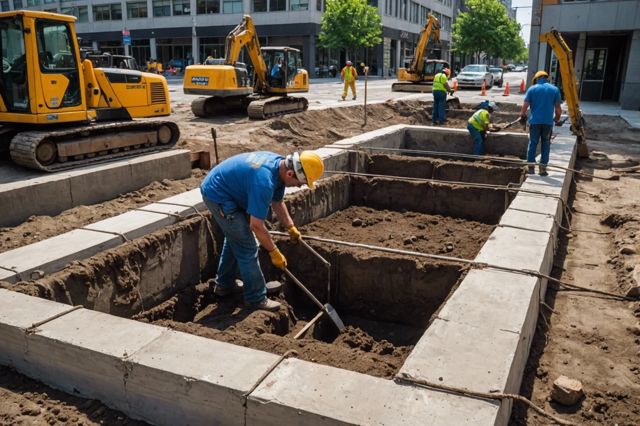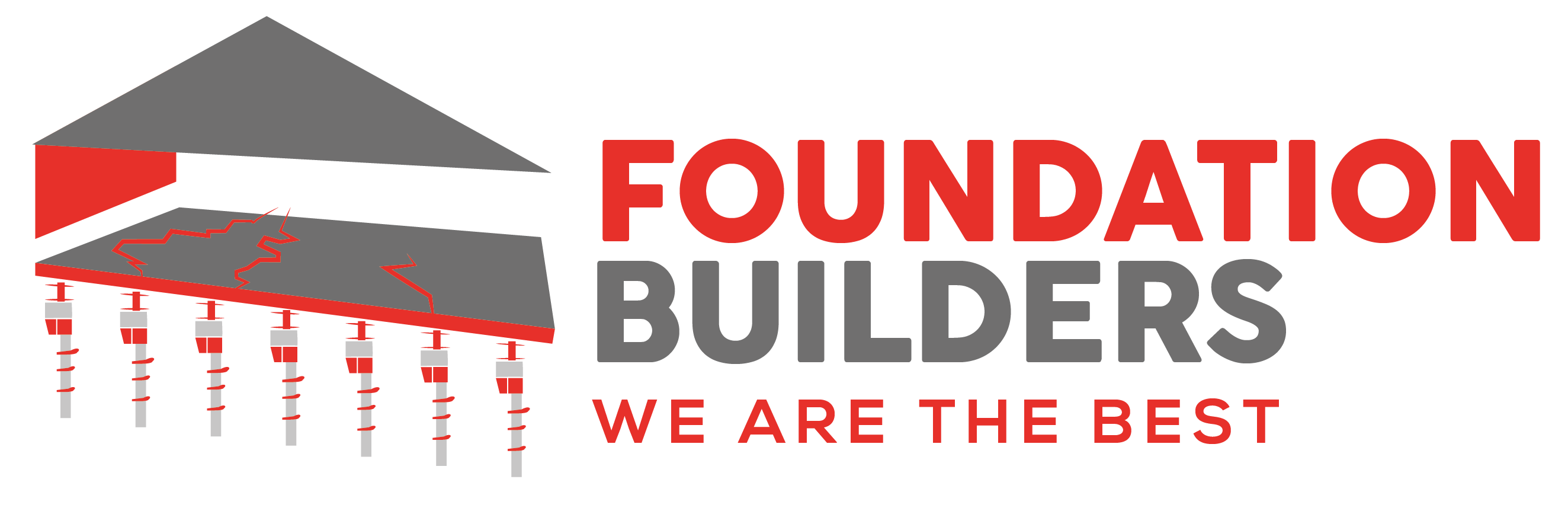In Los Angeles, replacing old house foundations involves identifying signs of damage such as cracks, unusual gaps, and mold, and then hiring a qualified contractor who can manage site and home preparation, secure permits, and follow through with the lifting and supporting processes. The costs and complexity of replacing a foundation vary, with comprehensive planning and professional handling essential to ensure stability and compliance with local building regulations.
1. Assessing the Need for Foundation Replacement in LA Homes
Los Angeles homeowners should consider replacing their house foundations if they encounter signs of damage. Common issues include:
- Exterior and interior wall cracks, especially diagonal near doors and windows.
- Unusual gaps around windows, doors, and between walls.
- Cabinets or countertops pulling away from walls.
- Squeaky, sagging, or bouncing floors.
- One side of the home sitting lower than the other.
- Persistent mold or mildew smells.
- Cracked or warped siding.
- Doors or windows sticking or becoming difficult to open.
- Drainage issues around the home.
- Leaning or cracked chimneys.
- Visible nails protruding from drywall.
- Bowing walls and cracked floor tiles.
Ignoring these signs can lead to more severe problems such as infestations, increased utility bills, and decreased home value. Repair costs can vary from $250 to $7,300, depending on the severity of the damage. To prevent future issues, ensure proper water drainage, avoid planting root plants near foundations, waterproof basement walls and crawl spaces, and regularly inspect the foundation. For an in-depth look at common foundation problems, visit Common Signs of Foundation Damage. For any concerns, it’s recommended to consult a licensed foundation repair specialist.

2. Preparing for Foundation Replacement
Preparing for foundation replacement in Los Angeles requires careful planning and coordination. Here are the necessary steps to ensure the process goes smoothly:
- Securing Permits: Begin by obtaining the necessary permits from Los Angeles city authorities. This is a vital step to ensure your foundation work complies with local building codes and regulations.
- Hiring a Qualified Contractor: Choosing the right contractor is critical. Look for professionals with experience in foundation replacement and a good track record in the industry. They should be able to handle the complexities of the project and provide a detailed repair plan. Learn more about selecting the best professionals at Choosing the Right Foundation Contractors in Los Angeles.
- Site Preparation:
- Conduct a thorough site evaluation to identify any potential issues like existing structures or variations in terrain.
- Perform soil testing to assess type, moisture levels, and load-bearing capacity.
- Clear and shape the site according to project specifications, ensuring a consistent and compact subgrade.
- Home Preparation: Before the extensive work begins, prepare your home to minimize disruption and damage:
- Move out furniture and other valuables from affected areas.
- Ensure easy access for workers and machinery.
Taking these steps will help in laying a solid foundation for your construction project, ensuring safety and stability for years to come. Remember, while some aspects of foundation work can be DIY, the complexity and importance of a sturdy foundation often necessitate Professional Intervention.
3. The Process of Lifting and Supporting the House
House lifting in Los Angeles involves a detailed process where a house is temporarily supported while the old foundation is removed and a new one is installed. Here’s what typically happens:
- Preparation: Workers dig around the house to access the foundation and position steel beams under the floor framing at key support points.
- Lifting: Hydraulic jacks raise the house off the old foundation. This is done carefully to prevent any damage to the structure.
- Supporting: While the house is lifted, cribbing—stacks of wooden beams or blocks—provides temporary but sturdy support.
- Cost Factors: The cost of house lifting can vary greatly, usually between $15,000 and $80,000. Factors affecting the price include the house size, necessary permits, and additional work like plumbing or electrical adjustments.
- Benefits: Lifting a house can protect against water damage, add space, or improve the foundation. It’s also used for adding basements, addressing flood risks, and earthquake retrofitting. Read more on Earthquake Ready Foundations in Los Angeles.
- Timeframe: The entire process generally takes 12-16 weeks. Homeowners should secure their valuables, as the house will be exposed to some risk during this period.
- Choosing a Method: Several methods are available, including traditional lifting with jacks and cribbing, slab jacking for uneven concrete, and helical pile lifting for soil issues. Each has its own benefits and is chosen based on the house’s needs and environmental conditions.
- Professional Handling: It is vital to hire experienced professionals for house lifting. This ensures safety and effectiveness throughout the process.

4. Excavation and New Foundation Pouring
- Excavating the old foundation is the first critical step in laying a new foundation. This involves breaking up and removing the existing foundation and ensuring the site is clear for the next stages.
- Preparing the ground comes next. Soil testing is vital to understand the soil’s properties like water absorption and bearing capacity. This influences the entire foundation setup. Thorough soil preparation ensures a stable base for the new foundation.
- Pouring the new foundation is a precise process. It begins with setting up forms for the concrete, placing rebar for reinforcement, and then the actual pouring of concrete. Each step requires careful attention to detail to meet local building codes and seismic regulations specific to Los Angeles.
- Considerations for Los Angeles include the local soil conditions and the need for earthquake-resistant construction. Using quality materials and adhering to best practices in concrete pouring ensures a durable and safe foundation.
- After the concrete is poured, it’s crucial to allow it to cure properly. This stage is essential for achieving the strength and longevity expected of a new foundation.
For more details on our foundation services, visit Foundation Replacement and Earthquake Retrofitting.

FAQ
What are the signs that indicate the need for foundation replacement in Los Angeles homes?
Signs pointing to the necessity of foundation replacement include exterior and interior wall cracks, gaps around windows and doors, sagging floors, and persistent mold smells. Stickiness of doors and windows, visible nails from walls, and cracked chimneys are also common indicators.
What steps should be taken to prepare for a foundation replacement in LA?
Preparation involves securing the necessary permits, hiring a qualified contractor, conducting a thorough site evaluation, and preparing the home by relocating furniture and ensuring easy access for workers.
How is a house supported during foundation replacement?
During foundation replacement, a house is temporarily supported by placing steel beams under the floor framing and using hydraulic jacks to lift the structure. Cribbing, which consists of stacks of wooden beams or blocks, is used to provide temporary but sturdy support.
What factors affect the cost of house lifting in Los Angeles?
The cost of house lifting is influenced by the size of the house, the need for additional work like plumbing or electrical adjustments, and the complexity of acquiring necessary permits. Costs typically range from $15,000 to $80,000.
What are the benefits of lifting a house in Los Angeles?
Lifting a house can help protect against water damage, allow for the addition of spaces like basements, improve foundation stability, address flood risks, and enhance earthquake preparedness.
What is involved in the excavation and new foundation pouring process?
This process entails excavating and removing the old foundation, testing and preparing the soil, and pouring a new foundation using concrete forms, rebar, and careful concrete pouring techniques to ensure stability and compliance with local building codes and seismic regulations.

